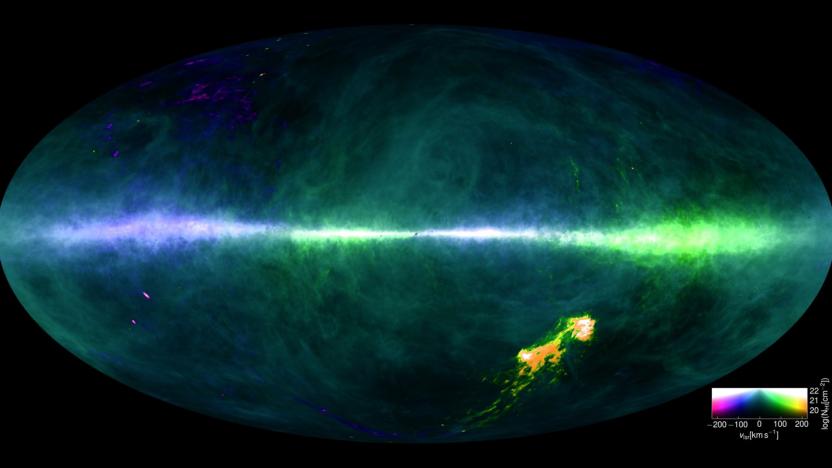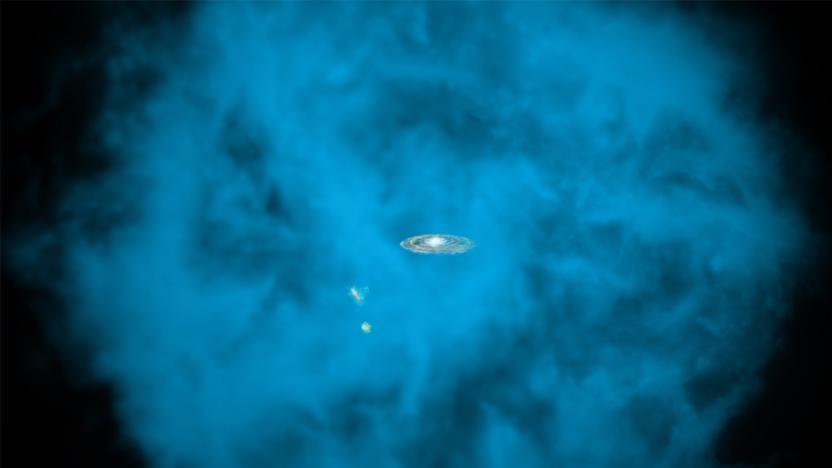milkywaygalaxy
Latest

Scientists map the Milky Way Galaxy in exceptional detail
There have been detailed maps of the Milky Way before, but none quite so ornate as this. Researchers in the HI4PI sky survey have created a fine-grained map of our home galaxy using its most common material: neutral atomic hydrogen. Such studies have taken place before, as you might guess. However, the use of 10 billion data points from large radio telescopes (the Parkes Observatory and Effelsberg 100m) and noise-filtering algorithms have produced an image with twice the sensitivity as the previous best, and four times the angular resolution. The result? A view of the Milky Way so comprehensive that you can finally see the finer details of cloud structures in between stars -- they were too blurry before.

Milky Way's spinning 'halo' helps reveal how galaxy formed
Out beyond our solar system are billions of other planets, starts, moon rocks and solar systems. Beyond that, however is an enormous, hot, gaseous halo of matter. It stretches for hundreds of thousands of light years, and could be the key to sorting out why there's not as much matter in the Milky Way as scientists estimate there should be. Now, scientists have learned something new about this layer of gas: It's spinning at almost the same rate as the rest of our galaxy.

European Space Agency creates one billion pixel camera, calls her GAIA
When we hear the name GAIA, our memory automatically zooms back to the Whoopi Goldberg-voiced Mother Earth from Captain Planet. This isn't that GAIA, but it does have to do with planets. Back at the turn of the millennium, the European Space Agency devised an ambitious mission to map one billion stars in our Milky Way galaxy -- in 3D (insert Joey Lawrence 'whoa!'). To do this, it enlisted UK-based e2v Technologies and built an immense digital camera comprised of 106 snugly-fit charge coupled devices -- the largest ever for a space program. These credit card-shaped, human hair-thick slabs of silicon carbide act like tiny galactic eyes, each storing incoming light as a single pixel. Not sufficiently impressed? Then consider this: the stellar cam is so all-seeing, "it could measure the thumbnails of a person on the Moon" -- from Earth. Yeah. Set to launch on the Soyuz-Fregat sometime this year, the celestial surveyor will make its five-year home in the Earth-Sun L2 Lagrange point, beaming its outerspace discoveries to radio dishes in Spain and Australia -- and occasionally peeping in your neighbor's window.


